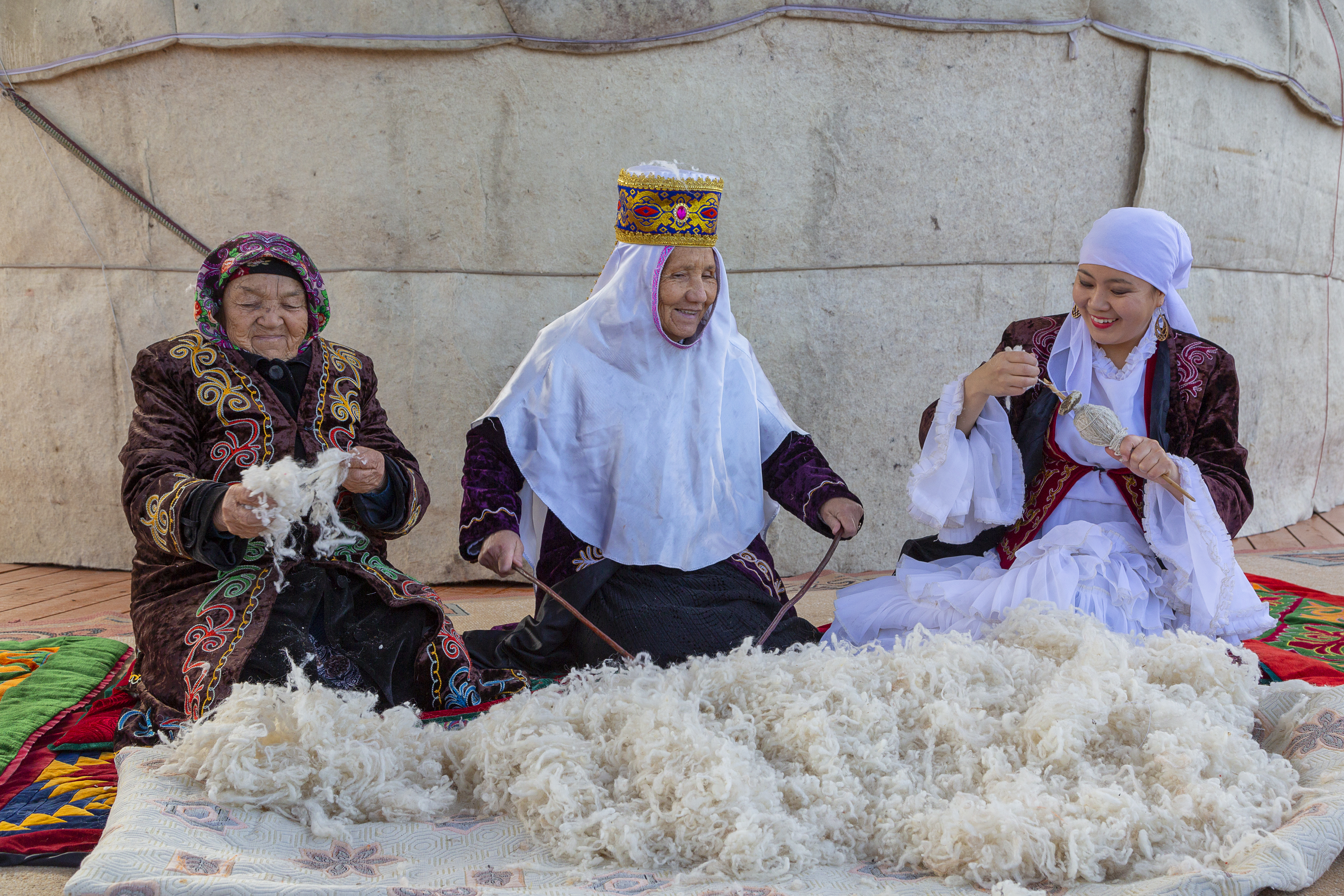
In recent years, the country's steppe heritage has played a prominent role in Kazakhstan's memory policy. In the historical self-image of the country, the Andronovo culture of the 2nd millennium BC has a dedicated place, the Bronze and Iron Age cultures, the history of the Silk Road that also touches today's Kazakhstan, the Turkic Khaganate, which existed in the second half of the 1st millennium BC, or the period of the Mongol conquests, described as the first state formation in the region. The actual Kazakh history begins after the fall of the Mongol Golden Horde when the formation of the three groups (Zhuz) of the Kazakh identity took place. The 17-18th century was defined by the battles with Dzungaria, located further to the east, while in the 19th century, the area was already under Russian rule, which was followed by the creation of modern Kazakh statehood within the Soviet framework in the 20th century.
Establishing a relationship with the distant past is basically easier; the more difficult task was and still is the (re)interpretation of the Russian imperial and Soviet periods. In addition to the great figures of the history of the Kazakh Khanate or the cultural greats beyond dispute, such as Abay Kunanbayev, contenders of Russian and Soviet rule are also gaining more and more space.
The history of the 1920s and 1950s repressions play a particularly important role in Kazakh history, the day of which is commemorated every year on May 31. The repressions affected a significant part of the Kazakh national political and cultural elite. In addition, the civil war and violent collectivization and industrialization, as well as the two famines that followed, changed not only the structure of society but also the country's ethnic relations. The latter also contributed to the fact that during the Stalin period, Kazakhstan became the new, forced home of many ethnic groups deported from other areas of the Soviet Union.

Nonetheless, the Kazakh national (minority) policy tries to emphasize the ideas of acceptance and peaceful coexistence in relation to the events of these times, placing mutual assistance in times of trouble at the centre of historical memory. The Day of Gratitude national holiday, celebrated on March 1 – which was introduced in 2016 – aims to emphasize that the people of Kazakhstan are grateful to each other and underlines such qualities of Kazakhs such as patience, hospitality and peaceful coexistence.
At the same time, some other events of the Soviet period are still looked back on with pride in Kazakhstan. One of these is, of course, the Great Patriotic War, whose monuments are still held in high esteem, and Victory Day is also a national holiday. But the role played in Soviet and today's Russian space research and astronautics can also be listed here.
Regarding the years of independence: although "Denazarbayevization" is stressed quite often these days, there is no attempt to erase the period of the first president and its achievements. In the National Museum of the Republic of Kazakhstan (Astana), the statue of Nursultan Nazarbayev is still the first one visitors can see, and it has also been given a separate room in the institution.
The author is Senior Researcher at 21st Century Institute, he was able to conduct research in Karaganda within the framework of the exchange programme between the Foundation for Research on Central and Eastern European History and Society and Karagandy Buketov University.